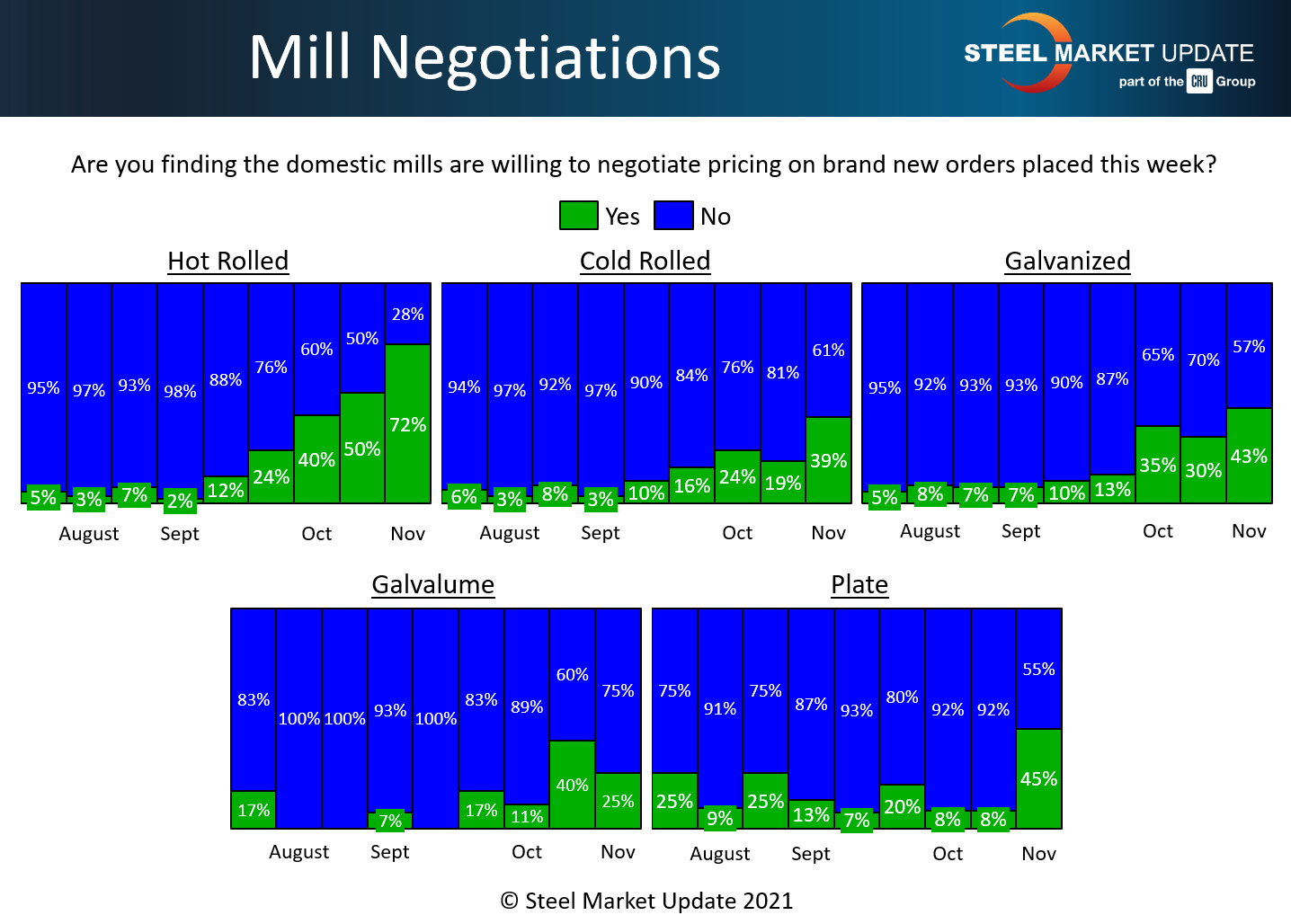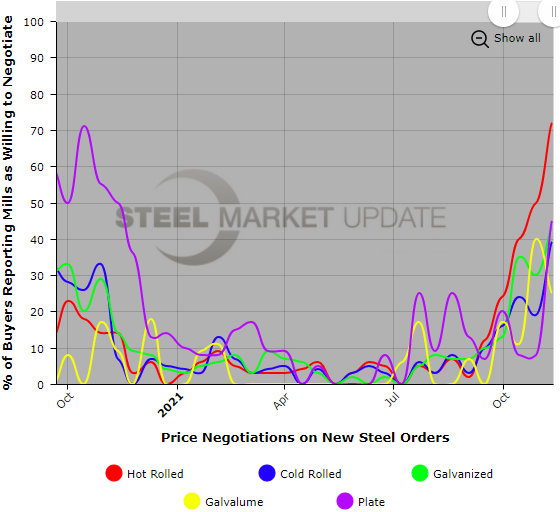SMU Data and Models

Steel Mill Negotiations: Momentum Shifting from Sellers to Buyers
Written by Tim Triplett
November 11, 2021
Buyers continue to gain leverage in steel price negotiations, especially for hot rolled products.
Steel Market Update asks buyers every two weeks whether mills are willing to talk price on spot orders. Nearly three out of four (72%) of the hot rolled buyers responding to this week’s poll said mills are now willing to negotiate HR prices to land an order. The percentage has not been that high since August 2020 and is a clear indication that the mills are no longer in a position to dictate hot rolled prices.
The mills still have the stronger bargaining position in other products, as anywhere from 55% to 75% of buyers report mills still unwilling to negotiate prices on plate, cold rolled and coated products. But the green bars are rising in the chart below, pointing to the shifting momentum between buyers and sellers as lead times shorten and prices moderate.
What Respondents Had to Say
“Lead times have moved down a bit, but there’s no real negotiating.”
“Not much negotiation yet … but ‘yet’ is the key word. I could see the back-and-forth starting back up in Q1.”
“There’s some negotiating for 2021, quite a bit for 2022 for larger inquiries.”
“They are negotiating in a small range, though they are not willing to tank the market.”
“Cold rolled and coated are remaining stronger than HRC, at least for now. So the mills are remaining pretty firm there.”
“Tandem products domestically remain strong. We have not seen movement.”


By Tim Triplett, Tim@SteelMarketUpdate.com

Tim Triplett
Read more from Tim TriplettLatest in SMU Data and Models

SMU’s June at a glance
A look at SMU data for the month of June.

SMU Survey: Buyers’ Sentiment rebounds from multi-year low
Both of SMU’s Steel Buyers’ Sentiment Indices edged higher this week. Current Sentiment rebounded from a near five-year low, while Future Sentiment rose to a two-month high

SMU flat-rolled market survey results now available
SMU’s latest steel buyers market survey results are now available on our website to all premium members.

SMU Survey: Sheet lead times pull back after early-June blip, plate holds
Following the uptick seen two weeks ago, lead times eased this week for all four sheet products tracked by SMU, while plate lead times held steady, according to this week’s market survey.

SMU Survey: Pricing power abruptly shifts to steel buyers
The majority of steel buyers responding to our latest market survey say domestic mills are more willing to talk price on sheet and plate products than they were earlier this month. Sheet negotiation rates rebounded across the board compared to early June, while our plate negotiation rate hit a full 100%.
